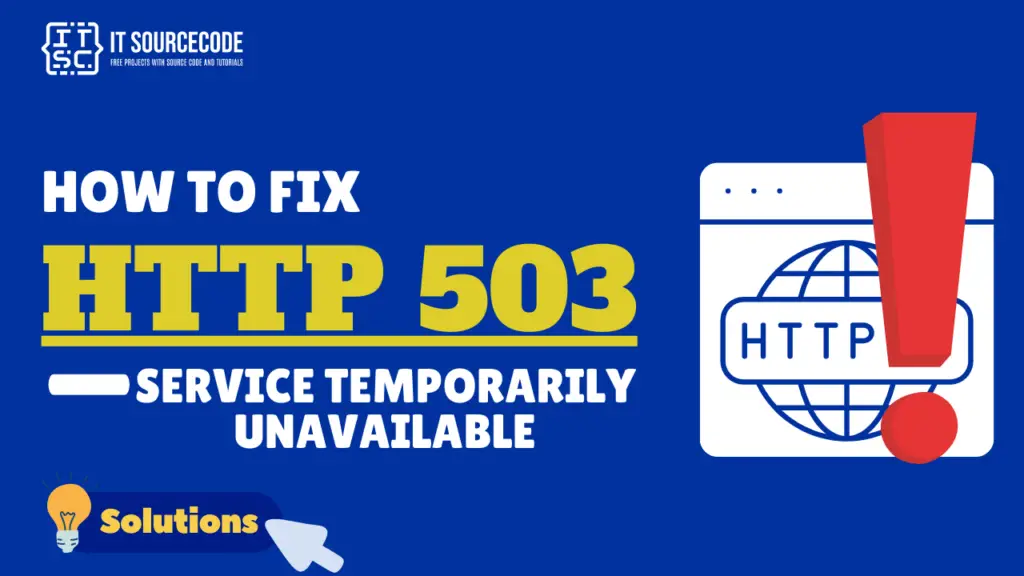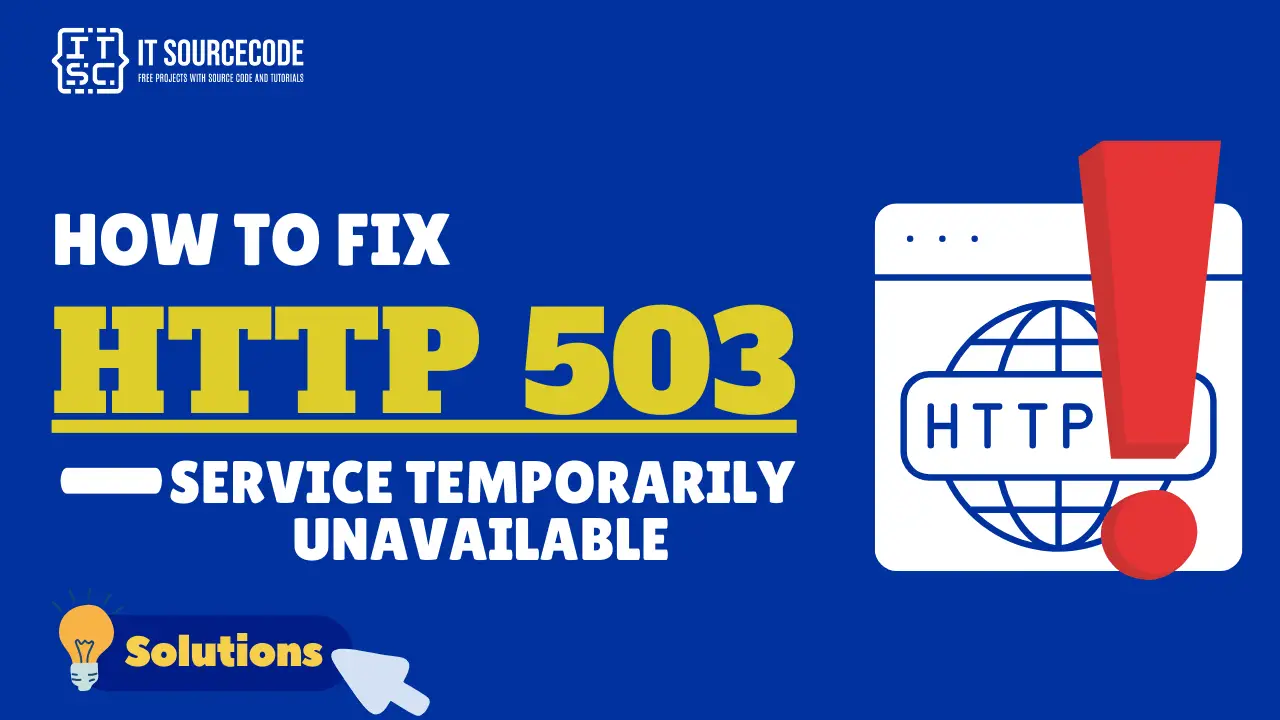What Does HTTP Error 503 Service Temporarily Unavailable Mean?
The HTTP Error 503 Service Temporarily Unavailable is a server-side error that indicates the server is currently unable to handle the request.

In other words, the HTTP 503 error simply means that the website you’re trying to access cannot process the request.
This could be due to the server being overloaded, under maintenance, or experiencing other problems.
503 Service Temporarily Unavailable Error Variations
Here are the following variations you might encounter, depending on your server setup and the browser you’re using:
- 503 Service Unavailable
- 503 Service Temporarily Unavailable
- Error 503 Service Unavailable
- HTTP Error 503. The service is unavailable.
- HTTP Error 503
- HTTP Server Error 503
- HTTP Error 503. The service is unavailable.
- The server is temporarily unable to service your request, please try again later.
Root Causes of 503 Service Temporarily Unavailable Error
Here are the possible root causes of why the HTTP error 503 the service is unavailable occurs:
- The server is out of resources.
- There are issues with server communication.
- The server is experiencing a sudden increase in traffic.
- The server is under a Distributed Denial of Service (DDoS) attack.
- There are problems with the DNS configuration.
- There are issues with plugin or theme compatibility.
How to Fix the HTTP 503 Service Temporarily Unavailable Error?

Since it’s hard to know what caused the 503 error, you need to fix it step by step. The next six parts each offer a possible solution to fix different causes of the error.
Solution 1: Monitor Server Resources
Verify your server’s resource usage. If your server is running out of resources, it may not be able to handle incoming requests, leading to a 503 error.
This could be due to high CPU usage, memory consumption, or network bandwidth.
You might need to upgrade your server resources or optimize your application to use resources more efficiently.
Solution 2: Maintenance Status
Servers often undergo maintenance, during which they might not be able to handle requests.
If your server is under maintenance, you’ll have to wait until the maintenance is completed.
You can usually check the maintenance status in your server’s control panel or by contacting your hosting provider.
Solution 3: Terminate Extra Processes
If there are unnecessary processes running on your server, they could be consuming resources that could otherwise be used to handle incoming requests.
You can use tools like top or htop on Linux servers to monitor running processes and terminate any that aren’t necessary.
Solution 4: Adjust Firewall Settings
Incorrect firewall settings can block incoming requests, leading to a 503 error.
Check your firewall settings to ensure they’re not blocking legitimate traffic.
You might need to adjust your firewall rules or temporarily disable your firewall to see if it’s causing the problem.
Solution 5: Analyze Server Logs and Correct Code
Server logs can provide valuable information about what’s causing the 503 error. Look for any error messages or warnings in your server logs that might indicate what’s going wrong.
If the error is being caused by a bug in your code, you’ll need to fix the bug and deploy the fixed code to your server.
Solution 6: Restart the Server and Network Equipment
Sometimes, a simple restart can resolve many issues. Try restarting your server and any network equipment like routers or switches. This can clear up temporary issues that might be causing the 503 error.
Solution 7: Inspect DNS Settings
Incorrect DNS settings can lead to a 503 error. Check your DNS settings to ensure they’re correct.
This includes checking your DNS records to ensure they’re pointing to the correct IP address, and checking your DNS server to ensure it’s functioning correctly.
Conclusion
The HTTP Error 503 Service Temporarily Unavailable is a server-side error that indicates the server is currently unable to handle the request.
In other words, the HTTP 503 error simply means that the website you’re trying to access cannot process the request.
By implementing the solutions provided above, you can confidently address and resolve this issue.
I hope this article helps you rectify this error.
For further learning, you can also check the following HTTP status code:

